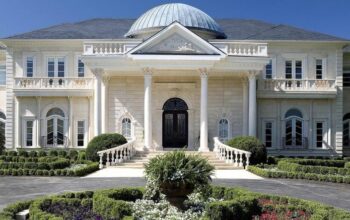Northeast Baltimore’s Clifton Mansion was in a sorry state in 2013. This treasure was then beginning an initial $7 million restoration. This spring, nine years later, Clifton shines again.
After decades serving as an administration building for Clifton Park and its public golf course, the mansion was a dreary mess of far too many dropped ceilings, office lights, hideous paint choices and vinyl floors. Despite excellent intentions and underfunded earlier tries, poor Clifton was pathetic.
And the termites feasted on its porches and columns.
What had been grand Victorian drawing rooms were serving as an accounting department. Parlor furniture had been replaced by steel desks and file cabinets.
In the past nine years, Clifton has been thoroughly restored with all new heating and air-conditioning. Civic Works, the nonprofit youth training and community service organization, which operates out of the mansion, began the initial heavy lifting for its restoration.
When that first, major phase was completed, the Friends of Clifton Mansion began providing the finishing touch. A small army of restoration painters, glaziers, cabinetmakers and artisans then transformed the parlors and the stair tower into what is now an almost unbelievable, rich and voluptuous interior.
The building now has been revealed as the home of English-born merchant and ship owner Henry Thompson, who built this late Georgian-style home and moved in about 1803. Thompson reared Devon cattle and Merino sheep on the 500-acre estate. He also raised rye and timothy and had a large orchard.
Years later, Johns Hopkins, the 19th century Baltimore merchant and philanthropist, acquired Clifton and had it enlarged in the Italianate style. Hopkins seemed to have fun making over the place he escaped to during the summer months. (During the winter, he lived downtown, also in baronial style, on West Saratoga Street, near Charles. That house was flattened for a parking lot in the 1930s.) New landscaping is seen at the Clifton Mansion, the former summer residence of Johns Hopkins. (Jerry Jackson/Baltimore Sun) Also new to the mansion is a marker that describes the shameful labor conditions there before the Civil War.
“Enslaved people were forced to live and work on the Clifton estate,” reads the plaque in the mansion’s main hallway. “Both Henry Thompson and Johns Hopkins benefitted from the forced labor of enslaved people. … We honor [these] people … Rueben, Bill, Kitty, Jacob, Sarah, Chester, Louis, Matilda, Annis, Isaac, Jim, Maria, Essex [and] Harriet and a second Bill and a second Maria and other names we do not know.”
Hopkins lived in an expansive way here in the late spring and summer months. He had a taste for a fancy interior and must have liked pinks and mauve and gold arabesques on his walls. He directed that painters produce a mural of the Gulf of Naples and Mount Vesuvius for his front hall. Now gloriously restored, this mural is a knockout.
Click here to view original web page at www.baltimoresun.com


![Preservation Alliance of Baltimore County releases new video featuring Perry Hall Mansion as county seeks proposals for landmark [VIDEO]](https://mansiondr.com/wp-content/uploads/2021/06/Perry-Hall-Mansion-350x220.jpeg)


